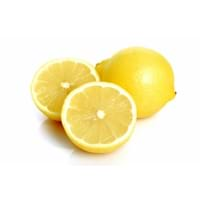Health Benefits
Anti-oxidant properties, Anti-inflammatory properties, Cancer prevention, Maintains healthy cholesterol level, Reduces blood circulation problems, Treatment of cough, fever & sore throat, Treatment of Hypertension
Arthritis treatment, Asthma treatment, Cancer prevention, Kidney stone treatment, Prevents constipation, Purging blood, Treatment of rheumatism
General Benefits
Treatment of asthma, Treatment of cataract, Treatment of hepatitis, Treatment of macular degeneration, Treatment of neurodegenerative diseases
Boosts immune system, Cures headache, Cures fever, Digestive aid, Flu treatment, Maintains healthy cholesterol level, Treatment of common cold
Skin Benefits
Treatment of Rheumatism & Dermatitis, Treatment of Skin Inflammation
Heals sunburn, Reduces wrinkles, Skin rejuvenation, Treatment of acne, Treatment of skin diseases
Hair Benefits
Unknown
Prevents hair loss, Treatment of dandruff
Allergy Symptoms
NA
Eczema, Hives, Inflammation, Itching, Skin rash, Swelling
Side Effects
Hypertension, Ventricular Tachycardia
Diuretic effects, Heart burn, Tooth decay, Chances of sunburn
Best Time to Eat
As a snack in the late afternoon, Eat the fresh ones, avoid mixing with any other foods, don't eat after meal., Morning time (before lunch), Strictly avoid empty stomach
Along with meal, Best to drink lemon water on an empty stomach., Don't consume at night and before bed
Vitamin B5 (Pantothenic Acid)
Not Available
Vitamin B6 (Pyridoxin)
Not Available
Vitamin B9 (Folic acid)
Not Available
Vitamin C (Ascorbic Acid)
Vitamin K (Phyllochinone)
Not Available
Lutein+Zeaxanthin
Not Available
Water Content
Not Available
Calories in Fresh Fruit with Peel
Not Available
Calories in Fresh Fruit without Peel
Not Available
Calories in Frozen Form
Not Available
Calories in Dried Form
Not Available
Calories in Canned Form
Not Available
Type
Fruit vegetable
Citrus, Tree fruit
Season
Spring, Summer
All seasons
Varieties
Physalis franchetii, Physalis pruinosa, Physalis peruviana, Physalis heterophylla and Physalis philadelphica
Avalon Lemon, Bears Lemon, Buddha's Hand, Bush Lemon, Citron, Eureka Lemon, Dorshapo Lemon, Finger Citron and Fino Citron
Color
Bright Yellow, Orange
Yellow, Yellowish-orange
Inside Color
Orange
Yellow
Origin
Chile, Peru
China, India
Soil Type
NA
Well-drained
Climatic Conditions
NA
Hot, Sunny
Facts about
NA
- Oil extracted from lemon peels is used for fingerboard of guitars.
- During Renaissance, ladies used lemons to redden their lips.
- Aroms of lemon decreases the level of stress hormones.
Other Countries
NA
Argentina, Brazil, India, Iran, Italy, Mexico, Spain, Turkey, United States of America
Top Importer
Netherlands
United States of America
Top Exporter
Colombia
Mexico
Botanical Name
Physalis Peruviana
Citrus limon
Synonym
Alkekengi, Herschellia & Pentaphitrum
Not Available
Subkingdom
Tracheobionta
Tracheobionta
Division
Magnoliophyta
Magnoliophyta
Class
Magnoliopsida
Magnoliopsida
Subclass
Asteridae
Rosidae
Order
Solanales
Sapindales
Family
Solanaceae
Rutaceae
Species
Physalis
C. limon
Generic Group
Not Available
Citrus fruit
Difference Between Physalis and Lemon
We might think that Physalis and Lemon are similar with respect to nutritional value and health benefits. But the nutrient content of both fruits is different. Physalis and Lemon Facts such as their taste, shape, color, and size are also distinct. The difference between Physalis and Lemon is explained here.
The amount of calories in 100 gm of fresh Physalis and Lemon with peel is 77.00 kcal and Not Available and the amount of calories without peel is Not Available and 29.00 kcal respectively. Thus, Physalis and Lemon belong to High Calorie Fruits and Low Calorie Fruits category.These fruits might or might not differ with respect to their scientific classification. The order of Physalis and Lemon is Solanales and Sapindales respectively. Physalis belongs to Solanaceae family and Lemon belongs to Rutaceae family. Physalis belongs to Physalis genus of Physalis species and Lemon belongs to Citrus genus of C. limon species. Beings plants, both fruits belong to Plantae Kingdom.









